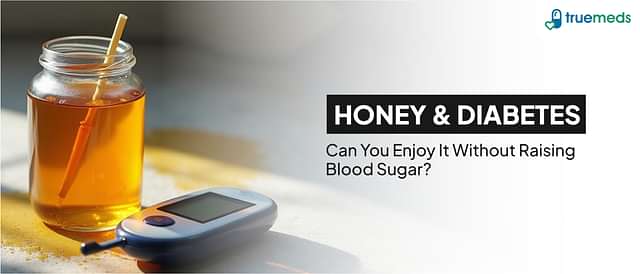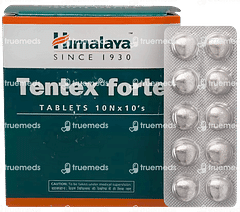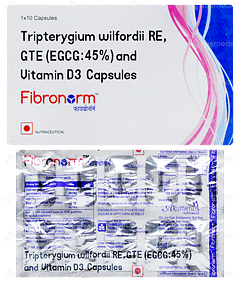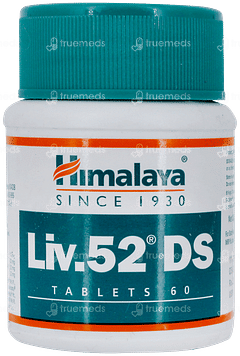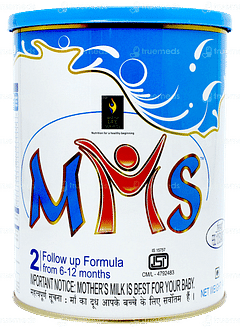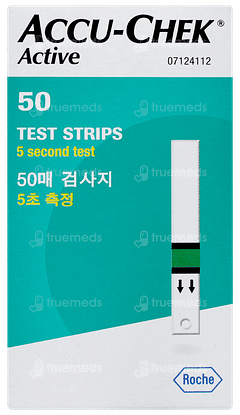Thrombocytopenia
Thrombocytopenia is a condition characterised by a low platelet count in the blood, which can lead to an increased risk of bleeding. It can be caused by various factors, including autoimmune disorders, bone marrow diseases, and certain medications. The severity of thrombocytopenia is classified into mild, moderate, and severe stages based on the platelet count.
Last updated on : 16 Dec, 2024
Read time : 15 mins

Overview of Disease
Thrombocytopenia is a haematological disorder that occurs when the number of platelets in the blood falls below the normal range. Platelets, also known as thrombocytes, are essential blood components that play a crucial role in the clotting process. When the platelet count is low, the body's ability to form clots and stop bleeding is compromised, leading to an increased risk of bleeding and bruising.
What is Thrombocytopenia?
Thrombocytopenia is a medical condition characterised by a lower than normal number of platelets in the blood. Platelets, also known as thrombocytes, are small, disc-shaped blood cells that play a vital role in the body's ability to form clots and stop bleeding. When the platelet count drops significantly, it can lead to various health complications, making it crucial to understand the causes, symptoms, and available treatment options for thrombocytopenia.
Normal Range of Platelet Count
In a healthy adult, the normal platelet count ranges from 150,000 to 450,000 platelets per μL of blood. This range indicates that the bone marrow is producing an adequate number of platelets to maintain proper blood clotting function. A platelet count below 150,000 μL is considered abnormal and may warrant further investigation to determine the underlying cause and appropriate treatment.
Key Factors about Thrombocytopenia
| Category | Details |
| Also Referred as | Thrombocytopaenia, thrombopenia, immune thrombocytopenia (ITP) |
| Commonly Occurs In | Patients with autoimmune diseases, certain medications, bone marrow disorders |
| Affected Organ | Bone marrow, spleen, liver |
| Type | Mild, moderate, severe |
| Common Signs | Petechiae, purpura, easy bruising, prolonged bleeding, nosebleeds, heavy menstrual flows |
| Consulting Specialist | Haematologist |
| Treatement Procedures | Corticosteroids, platelet transfusions, immunosuppressants, splenectomy, treating underlying conditions |
| Managed By | Corticosteroids |
| Mimiciking Condition | Haemolytic uraemic syndrome, thrombotic thrombocytopenic purpura |
Types of Thrombocytopenia
Thrombocytopenia can be classified into different types based on the underlying cause, including:
Immune thrombocytopenia (ITP): Immune thrombocytopenia, also known as idiopathic thrombocytopenic purpura (ITP), is an autoimmune disorder in which the body's immune system mistakenly attacks and destroys healthy platelets. ITP can be acute, lasting less than six months, or chronic, persisting for more than six months.
Drug-induced thrombocytopenia: Certain medications, such as heparin, quinine, and some antibiotics, can trigger an immune response that leads to the destruction of platelets. In some cases, the medication directly suppresses platelet production in the bone marrow.
Thrombotic thrombocytopenic purpura (TTP): TTP involves small blood clots throughout the body, leading to a low platelet count and possible organ damage.
Thrombocytopenia can also be caused by various other factors, such as:
Bone marrow disorders: Certain conditions, such as leukaemia or aplastic anaemia, can affect the bone marrow's ability to produce platelets.
Cancer treatments: Chemotherapy and radiation therapy can damage the bone marrow and lead to a decreased production of platelets.
Viral infections: Infections like HIV, hepatitis C, and Epstein-Barr virus can sometimes lead to thrombocytopenia.
Pregnancy: Thrombocytopenia can occur during pregnancy, especially in the third trimester, due to increased platelet consumption and haemodilution.
Identifying the specific type of thrombocytopenia is essential for determining the appropriate treatment approach and managing the underlying cause effectively.
Early Signs of Thrombocytopenia
Thrombocytopenia can present with several warning signs that are important to recognise. The early signs of thrombocytopenia include:
Easy bruising
Abnormal bleeding, such as nosebleeds, bleeding gums, or heavy menstrual periods
Blood in the stool or urine
Pinpoint bleeding in the skin, known as petechiae
Cuts that continue to bleed for an extended period
If you notice any of these early signs of thrombocytopenia, it's essential to consult with your doctor for a proper diagnosis and treatment plan.
Symptoms of Thrombocytopenia
Symptoms of thrombocytopenia can vary but typically include a range of warning signs that indicate low platelet levels. These include:
Easy bleeding: People with thrombocytopenia may experience easy bleeding due to low platelet counts. This can manifest in various ways, including nosebleeds, bleeding gums, and heavier or longer menstrual periods. Additionally, they may notice blood in their urine or stool.
Skin problems: Thrombocytopenia can cause pinpoint bleeding in the skin, known as petechiae. These appear as small, red, flat spots. Patients may also notice larger areas of bleeding under the skin, which can be bluish or purplish in colour.
Fatigue: Those with thrombocytopenia may feel fatigued due to underlying conditions that cause low platelet counts.
Enlarged spleen: In some cases, an enlarged spleen can contribute to thrombocytopenia by trapping platelets.
It's important to note that the severity of symptoms may vary depending on the underlying cause of thrombocytopenia and the individual's overall health.
Stages of Thrombocytopenia
The severity of thrombocytopenia is categorised into three stages based on the platelet count. These include:
Mild thrombocytopenia: In mild thrombocytopenia, the platelet count ranges from 101,000 to 140,000 per μl. At this stage, the risk of bleeding is minimal, and bleeding may only occur after minor injuries or trauma.
Moderate thrombocytopenia: Moderate thrombocytopenia is characterised by a platelet count ranging from 51,000 to 100,000 per μl. With this level of thrombocytopenia, the risk of bleeding increases moderately, and bleeding may occur more easily following injuries.
Severe thrombocytopenia: In severe thrombocytopenia, the platelet count falls below 50,000 per μl. This stage poses a significant risk of bleeding, which can lead to life-threatening complications. Minor bleeding can occur spontaneously without any apparent injury, and excessive bleeding is likely during surgical procedures or in cases of trauma.
Causes of Thrombocytopenia
Thrombocytopenia can be caused by a range of factors, including medical conditions, medications, lifestyle factors, and autoimmune disorders. The thrombocytopenia causes include:
Bone marrow problems: Thrombocytopenia can result from disorders affecting the bone marrow's platelet production, such as aplastic anaemia, leukaemia, and multiple myeloma.
Liver disease: The liver plays a role in platelet production, and liver disorders such as cirrhosis and hepatitis can impact platelet counts.
Infections: Certain infections, such as viral or bacterial infections, can affect platelet production or cause increased platelet destruction.
Immune conditions: Some immune system disorders such as immune thrombocytopenic purpura (ITP) and systemic lupus erythematosus (SLE), can cause the body to mistakenly attack and destroy platelets.
Blood clotting disorders: Blood clotting disorders, such as disseminated intravascular coagulation (DIC) and thrombotic thrombocytopenic purpura (TTP), can impact platelet counts by affecting the blood's ability to clot properly.
Heparin: This blood-thinning medication can sometimes cause a rare condition called heparin-induced thrombocytopenia (HIT).
Chemotherapy: Certain chemotherapy medicines (e.g. cisplatin) used to treat cancer can damage the bone marrow and reduce platelet production.
Heavy alcohol use: Excessive alcohol consumption can suppress bone marrow function and lead to thrombocytopenia.
Nutritional deficiencies: Low levels of vitamin B12 and folate can contribute to decreased platelet production.
Genetic conditions: Genetic conditions such as Bernard-Soulier syndrome, Glanzmann thrombasthenia, and Wiskott-Aldrich syndrome can affect platelet production or function due to inherited abnormalities.
Pregnancy complications: In rare cases, pregnancy-related conditions such as HELLP syndrome can cause thrombocytopenia.
Immune thrombocytopenic purpura (ITP): This is a condition in which the immune system mistakenly attacks and destroys platelets, leading to low platelet counts.
Understanding the underlying causes of thrombocytopenia is essential for developing an appropriate treatment plan and managing the condition effectively.
Risk Factors
Factors contributing to the risk of thrombocytopenia include:
Individuals with thrombocytopenia face an increased risk of bleeding and thrombosis.
Spontaneous bleeding can occur when the platelet count drops below 10,000 per microlitre.
Surgical procedures carry a higher risk of bleeding complications when platelet counts are under 50,000 per microlitre.
Severe thrombocytopenia is associated with a heightened risk of severe internal bleeding.
Bleeding in the brain, although rare, can be fatal in patients with thrombocytopenia.
Complications
The complications associated with thrombocytopenia can include:
Severe bleeding: Severe thrombocytopenia can lead to life-threatening internal bleeding, particularly in the brain. This complication requires immediate medical attention and appropriate treatment to prevent fatal consequences.
Heparin-induced thrombosis (HIT): This condition can lead to arterial and venous thrombosis, potentially resulting in deep vein thrombosis, pulmonary embolism, stroke, and heart attack.
Antiphospholipid antibody syndrome: Associated with arterial and venous thrombosis, this condition can result in recurring miscarriages, posing significant challenges for affected individuals.
Thrombotic thrombocytopenic purpura (TTP): Characterised by microvascular thrombosis involving various organs, predominantly the central nervous system, TTP requires prompt diagnosis and treatment to prevent severe neurological complications.
Hemolytic uremic syndrome (HUS): Primarily affecting the kidneys, HUS can lead to acute kidney failure, necessitating dialysis or even kidney transplantation in severe cases.
Timely recognition and management of these complications are essential to minimise their impact on patients with thrombocytopenia.
Prevention of Thrombocytopenia
The preventive measures for thrombocytopenia include:
Avoiding medications that lower platelet counts: Certain medications, such as heparin, quinine, sulpha-containing antibiotics, and anticonvulsants, can reduce platelet counts. Avoiding or carefully managing these medications can help prevent thrombocytopenia.
Managing underlying conditions: Controlling underlying conditions like liver disease, infection, and cancer can aid in preventing thrombocytopenia.
Avoiding contact sports: Patients with low platelet counts should avoid contact sports and other potentially traumatic activities to minimise the risk of bleeding.
Implementing preventive measures can significantly reduce the incidence and severity of thrombocytopenia.
Diagnosis & Tests
The diagnosis of thrombocytopenia involves a series of tests and evaluations to determine the underlying cause of low platelet counts. These include:
Physical examination and medical history: A comprehensive physical examination and detailed medical history are essential to identifying the signs and symptoms of thrombocytopenia and any underlying conditions that may contribute to its development.
Complete blood count (CBC): A CBC is the primary diagnostic test for thrombocytopenia. It measures the number of platelets in the blood, along with other blood cell components. A platelet count below 150,000/microlitre indicates thrombocytopenia.
Peripheral blood smear: A peripheral blood smear involves examining a sample of blood under a microscope to assess the appearance and size of platelets. This test identifies platelet abnormalities and helps determine the cause of thrombocytopenia.
Bone marrow examination: In some cases, a bone marrow biopsy or aspiration may be necessary to evaluate the bone marrow's ability to produce platelets. This procedure is particularly useful in diagnosing conditions like aplastic anaemia or certain types of leukaemia that can cause thrombocytopenia.
Additional tests: Coagulation tests can assess blood clotting function, while autoimmune antibody tests help detect antibodies that might be destroying platelets. Viral serology tests may also be performed to identify any viral infections associated with low platelet counts.
An accurate diagnosis of thrombocytopenia is crucial for determining the appropriate treatment approach and managing the condition effectively.
Treatment & Management
The treatment for thrombocytopenia varies depending on the underlying cause and severity of the condition. Mild cases may not require any specific treatment, while more severe cases may need targeted interventions. The treatment lines include:
General management: Treatment varies based on the cause and severity of thrombocytopenia, often focussing on addressing the underlying issue.
Medications: Medications such as corticosteroids, thrombopoietin receptor agonists, and intravenous immunoglobulin are used to either boost platelet production or suppress the immune response.
Blood transfusions: Platelet transfusions provide immediate relief for severe cases and are used to prevent bleeding during emergencies or surgeries.
Splenectomy: Removal of the spleen may be recommended for chronic immune thrombocytopenic purpura (ITP) when other treatments fail, as it can reduce platelet destruction.
Plasmapheresis: Plasmapheresis helps in conditions like thrombotic thrombocytopenic purpura (TTP) by removing harmful substances from the blood.
Treatment of underlying conditions: Addressing the primary condition, such as liver disease or cancer, can often resolve secondary thrombocytopenia.
Bone marrow stimulation: In cases like aplastic anaemia, treatments to stimulate bone marrow production or, in severe cases, bone marrow transplants may be necessary.
Lifestyle and supportive care: Patients are advised to avoid activities that could lead to bleeding, and ongoing monitoring and supportive care are crucial for effective management.
Medication of Thrombocytopenia
Corticosteroids, such as prednisone or dexamethasone, are commonly used as a first-line treatment for immune thrombocytopenia purpura. These medications help to suppress the immune system and reduce the destruction of platelets. For patients who do not respond to other therapies, rituximab, an immune suppressor, may be prescribed to help improve platelet levels. Medications such as eltrombopag and romiplostim stimulate the bone marrow to produce more platelets, helping to increase the platelet count. The specific medication regimen will be tailored to the individual patient's needs and may be adjusted over time based on their response to treatment.
Living with Disease
Living with immune thrombocytopenia can be challenging, but there are strategies to enhance your quality of life. Here are some key pointers:
Manage fatigue by ensuring adequate sleep, tracking platelet counts, and incorporating a nutritious diet.
Practices like meditation and yoga can also boost energy levels.
Be proactive about preventing bleeding episodes. Carry medications like aminocaproic acid or tranexamic acid for emergencies, and have over-the-counter nosebleed treatments readily available. Use hydrogen peroxide to treat blood stains on clothing.
If you're on corticosteroids like prednisone, take steps to mitigate side effects. This includes maintaining a healthy diet, staying active, and consulting with your doctor for tailored guidance.
When to See a Doctor?
If you experience symptoms of thrombocytopenia, such as excessive bleeding, bruising, or the appearance of petechiae (tiny red or purple spots on the skin), it is important to consult a doctor. In cases of severe or life-threatening thrombocytopenia, immediate medical attention is crucial. However, if you have mild thrombocytopenia, you may only require routine monitoring and no treatment unless symptoms develop.
Key Takeaways
Thrombocytopenia treatment depends on the underlying cause and severity of the condition. Mild thrombocytopenia often does not require treatment.
Corticosteroids are commonly used as the first line of treatment for immune thrombocytopenic purpura (ITP).
Immunoglobulin therapy, thrombopoietin receptor agonists, rituximab, and eltrombopag may be used to manage thrombocytopenia, depending on the underlying cause.
Splenectomy may be considered when other treatments have failed to improve platelet counts.
Platelet transfusions may be necessary for patients with life-threatening bleeding or those undergoing surgery.
Consult a doctor if you experience symptoms of thrombocytopenia or have been prescribed medications that could cause the condition as a side effect.
Regular monitoring of platelet counts is essential for individuals at risk of developing thrombocytopenia.
FAQs
Is thrombocytopenia curable?
Thrombocytopenia is a condition characterised by low platelet counts in the blood. Mild cases often resolve on their own or with treatment, while severe cases may require more intensive interventions.
Which fruit increases most platelets?
Papaya is often cited as a fruit that can help increase platelet counts due to its high levels of vitamin C and enzymes that support blood health. Additionally, pomegranate may also aid in boosting platelet levels due to its rich antioxidant content.
What levels indicate thrombocytopenia?
Thrombocytopenia is diagnosed when platelet counts fall below 150,000 per microlitre of blood, with normal ranges typically between 150,000 and 450,000 per microlitre.
What is a warning level of platelets?
Platelet counts below 30,000 per microlitre are considered severe and require prompt medical attention to prevent complications such as internal bleeding.
What is the difference between thrombocytopenia and idiopathic thrombocytopenic purpura?
While thrombocytopenia is a general term for low platelet counts, ITP is a specific autoimmune condition where the body mistakenly destroys platelets, leading to more severe thrombocytopenia that necessitates targeted treatment.
What is the best treatment for thrombocytopenia?
The best treatment for thrombocytopenia depends on the underlying cause. Strategies may include discontinuing certain medications, using corticosteroids or intravenous gamma globulin for ITP, or addressing the specific factors contributing to low platelet counts.
Which vitamin deficiency causes thrombocytopenia?
Vitamin B12 and folate deficiencies can both cause thrombocytopenia. These vitamins are crucial for the production and maturation of blood cells, including platelets.
Does coconut water increase platelets?
Coconut water is not specifically known to increase platelet counts. While it is hydrating and contains various nutrients, it does not have a direct effect on boosting platelet levels.
What infections cause thrombocytopenia?
Thrombocytopenia can be caused by various infections, including viral infections such as hepatitis, HIV, and others that affect the body's ability to produce or maintain adequate platelet levels.
Are there any home remedies for the disease ?
Home remedies like a diet rich in vitamins B12, folate, and vitamin C, along with staying hydrated, may support platelet health. However, they cannot replace medical treatment for thrombocytopenia.
References
Abdulkareem, O., & Adigun, T. (2021). Thrombocytopenia. In StatPearls. StatPearls Publishing. https://www.ncbi.nlm.nih.gov/books/NBK542208/
National Heart, Lung and Blood Institute (n.d.). Thrombocytopenia. https://www.nhlbi.nih.gov/health/thrombocytopenia
National Library of Medicine. (2023, April 3). Platelet disorders. MedlinePlus. https://medlineplus.gov/plateletdisorders.html
Australia. Helathdirect (n.d.). Thrombocytopenia. https://www.healthdirect.gov.au/thrombocytopenia
Browse Other Conditions
Latest health articles
Top Health Essentials
Disclaimer
Top-Selling Medicines:
Top-OTC medicines:
...View more
Company
About UsHealth ArticleHealth StoriesDiseases & Health ConditionsAll MedicinesAll BrandsNeed HelpFAQSubscribe
Registered Office Address
Grievance Officer
Download Truemeds

Contact Us
Our customer representative team is available 7 days a week from 9 am - 9 pm.
v3.7.6
Our Payment Partners
















